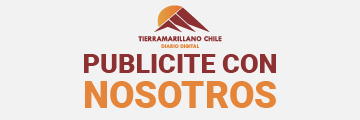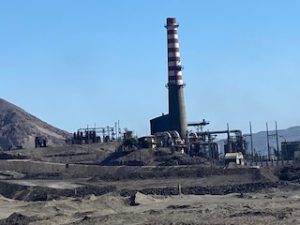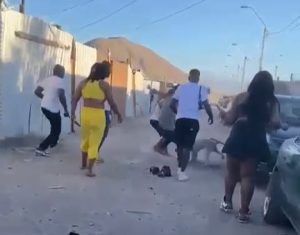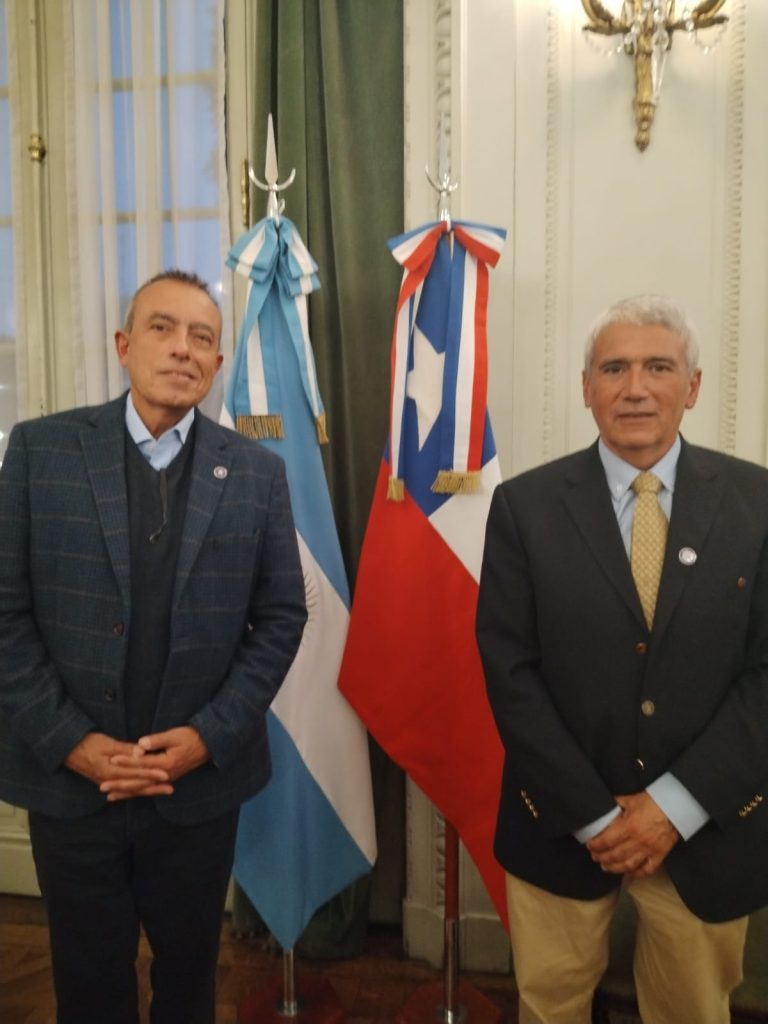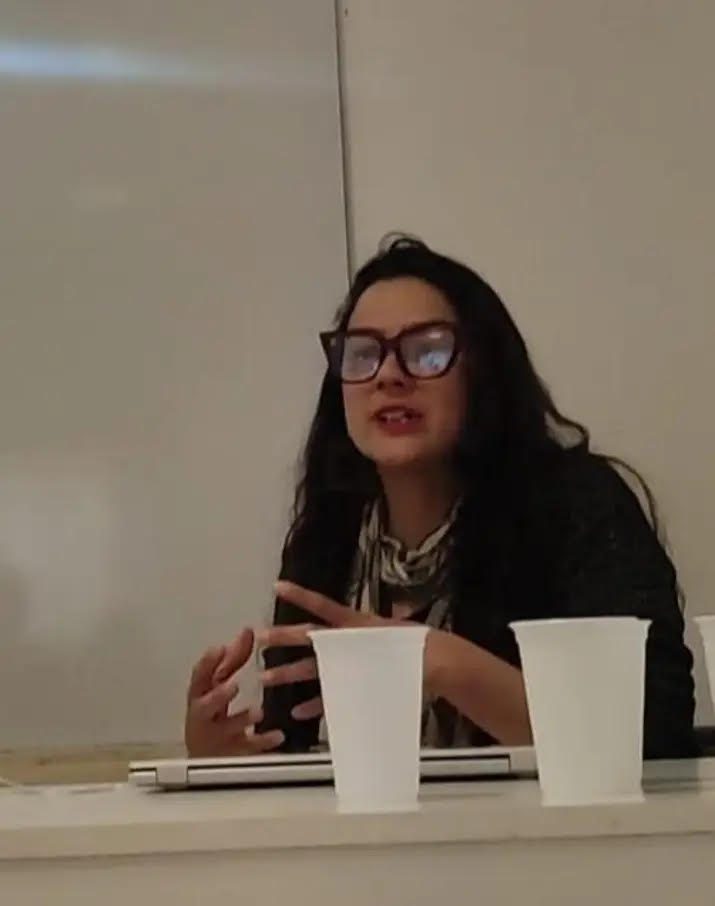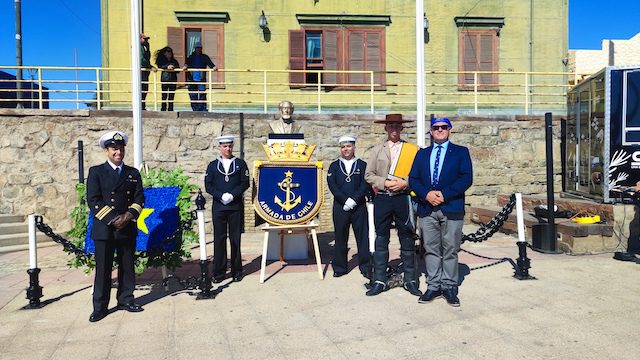Por Ulises Carabantes Ahumada
Ingeniero Civil Industrial. Analista de actualidad. Escritor.
(At the end of the spanish text you will find the english translation)
Estimado lector, en las próximas líneas podrá leer un muy breve pero descriptivo resumen de algunos capítulos del libro Chile 1973. Quien quiera profundizar en esta materia y desee comprar el libro, consulte al correo ucarabantes@gmail.com, para las ediciones en Chile como también en España. Esta es la sexta de trece publicaciones sabatinas que efectuaré hasta el sábado 9 de septiembre.
Al finalizar junio de 1973 no se veía una salida pacífica a la grave crisis por la que pasaba Chile, sólo los negros nubarrones de la guerra civil se divisaban en el horizonte. El comandante en jefe del ejército, general Carlos Prats, facasó en la acción política que constitucionalmente no le correspondía desarrollar y a la que fue llevado por el presidente de la república Salvador Allende, como fue sentarse a conversar con cada uno de los partidos de la Unidad Popular, buscando que estos aceptaran una tregua con la oposición, efectuando concesiones programáticas que pasaban por ordenar el sistema productivo de Chile que había sido llevado a la anarquía total. Prats no logró minimizar ni menos eliminar la condición básica para que se desencadenara la guerra civil, como era la existencia de dos bandos irreconciliables y sin ninguna vocación de acuerdo entre ellos.
Como se expresó en una publicación anterior a ésta, junio de 1973 finalizó también con la asonada del regimiento blindado N° 2 bajo el mando del teniente coronel Roberto Souper y que quedó para la historia como el “tancazo”. Era lo que el general Augusto Pinochet había anunciado al general Prats como posibles “desbordes” en el ejército. Por otra parte, los enfrentamientos en las calles eran algo diario, el desabastecimiento de elementos básicos para la vida de las personas aumentaba día a día y también se producían “desbordes” en la Unidad Popular, cuyos principales partidos, comunista y socialista, publicaron una dura crítica al presidente Allende a través del diario comunista El Siglo, por haber recibido en La Moneda a dirigentes de los mineros de la mina El Teniente, que estaban en huelga.
Por otra parte fracasó el proyecto Sierra Alfa, que desarrollaría el Frente Nacionalista Patria y Libertad en la cordillera de Mendoza, en la llamada Sierra Nevada y que contemplaba la preparación militar de quinientos chilenos y su equipamiento, para ingresar a Chile e iniciar la lucha armada en contra del gobierno, contando dentro del plan que se sumaran unidades de las fuerzas armadas. De la acción de Patria y Libertad en territorio argentino estaba en conocimiento un alto oficial de inteligencia del ejército de dicho país. El proyecto Sierra Alfa fracasó por el percanse aéreo que tuvo el líder de tal iniciativa, Roberto Thieme, cuyo avión tuvo desperfectos técnicos en un vuelo que efectuaba desde Buenos Aires a Mendoza junto a Miguel Sessa, a fines de abril de 1973. Tal hecho trajo como consecuencia la detención de los dos nacionalistas chilenos por parte de la policía federal argentina en Mendoza, propagándose la información por los medios de comunicación, quedando al descubierto la falsa caída de Thieme al mar frente a Concepción en febrero del mismo 1973. Por el nexo que Thieme había establecido con el ejército argentino, tanto éste como Sessa fueron liberados y oficiales de inteligencia de las fuerzas armadas argentinas les sugirieron solicitar asilo político en Argentina, comprometiéndose estos militares a acelerar la otorgación de dicho asilo por parte del presidente Alejandro Agustín Lanusse. En paralelo, grupos izquierdistas argentinos protestaban frente al regimiento de Mendoza, donde estaban Thieme y Sessa, por la protección que recibían los dos fascistas chilenos. 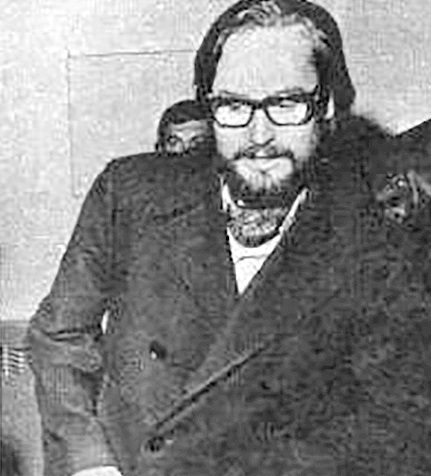
Finalmente, se le otorgó el asilo a Roberto Thieme y Miguel Sessa por parte del gobierno argentino y el gobierno chileno solicitó la extradición de ambos. Por tal motivo tomaron la decisión del ingreso clandestino de Miguel Sessa a Chile para que continuara con la organización de las brigadas operacionales y Thieme salió hacia Paraguay para reingresar a Argentina con identidad falsa y continuar con el proyecto Sierra Alfa, no obstante instalarse en Argentina un nuevo gobierno, el del peronista Héctor Cámpora. Sin embargo, el propósito de continuar adelante con este proyecto no prosperó y Roberto Thieme retornó clandestinamente a Chile.
El 16 de julio de 1973 Thieme reapareció en Santiago dando una conferencia de prensa de carácter clandestino en un restaurante de Las Condes. En ella, Patria y Libertad anunció que se sumergía en la clandestinidad e iniciaba la lucha armada en contra del gobierno de Allende.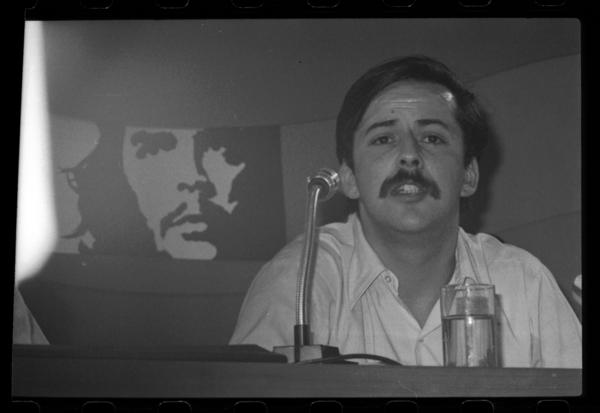
Por otra parte, al día siguiente, 17 de julio, la organización de extrema izquierda, MIR, efectuó un masivo acto en el teatro Caupolicán de Santiago, en el que habló su máximo líder Miguel Enríquez. Criticó Enríquez los intentos que hacía el gobierno por llegar a un acuerdo con la oposición, señalando que su organización seguía su propia ruta revolucionaria, la consabida lucha armada. Enríquez era interrumpido por sus seguidores con lo que era un verdadero grito de guerra “¡Pueblo!, ¡Conciencia!, ¡Fusil!, ¡MIR, MIR!”.
Miguel Enríquez llamó a acentuar una de las causas principales de la anarquía económica y el desabastecimeinto, las tomas ilegales de fábricas y fundos, como así también la ruptura de la república y la atomización de esta a partir de sobrepasar los tres poderes del Estado, proclamando: “Los revolucionarios y los trabajadores deben de inmediato extender ‘las tomas’ de fábricas y fundos, multiplicar las tareas de defensa, impulsar el ‘poder popular’, como gobierno local, autónomo de los poderes del Estado”.
El máximo líder del MIR hizo gala de un lenguaje de guerra, utilizando los términos “atrincheramiento”, “enfrentamientos”, calificando su accionar como “actos de combate”, haciendo un llamado a sus seguidores a “reemprender con más fuerza que nunca la lucha sin cuartel” contra lo que llamó “clases patronales”, y en contra de políticos como Sergio Onofre Jarpa y Eduardo Frei. Ante esta arenga los seguidores de Enríquez respondieron gritando en una sola voz “¡Paredón!, ¡Paredón!, ¡Paredón!, ¡Paredón!”, llamando a la ejecución de quienes consideraban sus enemigos.
Junto con invocar la “lucha sin cuartel”, Miguel Enríquez llamó al quiebre de las fuerzas armadas, es decir, a que se concretara la segunda condición para la guerra civil al dividirse las instituciones castrenses y proclamó que una vez infiltradas por parte del MIR las fuerzas armadas y carabineros, toda las formas de luchas serían legítimas. Para Enríquez, cualquiera sea la manera, ésta era válida si con eso se lograba el objetivo de eliminar a sus enemigos. Textualmente Enríquez señaló: “Los suboficiales y carabineros deberán desobedecer las ódenes de los oficiales golpistas y en ese caso todas las formas de lucha se harán legítimas, entonces si que será cierto que los trabajadores con los soldados, los marineros, los carabineros, los suboficiales y los oficiales anti golpistas, tendrán el derecho a construir su propio ejército, el ejército del pueblo”. Fue el llamado a la guerra civil y una forma de proceder sin contemplaciones en contra de sus enemigos. De la misma manera le vendría posteriormente la respuesta a Enríquez y su organización.
En julio de 1973 se comenzaba a configurar definitivamente el escenario para la sangrienta guerra interna. Por una parte el general Carlos Prats no tuvo éxito en eliminar la condición básica, la existencia en Chile de dos facciones irreconciliables dispuestas a la destrucción de la una sobre la otra. Los partidos de la Unidad Popular no consideraron válido el llamado de Prats y el MIR llevaba su camino “revolucionario” propio, que no atendía ningún tipo de razones. Por otra parte, el Frente Nacionalista Patria y Libertad declaró la lucha armada en contra del gobierno. La condición básica, primaria, estaba dada. Faltaba la segunda para concretar la guerra civil: la división de las fuerzas armadas, por la que se estaban jugando el partido comunista y el partido socialista, de acuerdo con lo expresado por sus máximos dirigentes al general Carlos Prats, el MIR, expresado claramente por su máximo líder Miguel Enríquez y por Patria y Libertad, agrupación de extrema derecha que esperaba sumar regimientos cuando iniciara la lucha armada en contra del gobierno. La toma de posición de las fuerzas armadas en forma fracturada por ambos bandos era sinónimo de la guerra civil que le costaría a Chile un mínimo de quinientos mil muertos, según las proyecciones castrenses de la época. A esas alturas, sólo una intervención sin quiebres, es decir unida de las fuerzas armadas, evitaría tal catástrofe a Chile. Prats fracasó en su intervención buscando lograr una tregua política. Habría que ver si era posible evitar la división del ejército, armada, fuerza aérea y carabineros y con esto evitar la guerra civil.
Si durante las trece publicaciones de este ciclo histórico, alguno de mis lectores se interesa en tener el libro Chile 1973; tanto para la edición en Chile como en España, pueden hacer llegar su consulta al correo electrónico ucarabantes@gmail.com
Los espero el próximo sábado 29 de julio con la séptima publicación histórica, la que llevará por título Cincuenta Años: Se Acentúa la Violencia.
Fifty Years
Inclination towards Violence
By Ulises Carabantes Ahumada
Industrial Civil Engineer. Current affairs analyst. Writer.
Dear reader, in the following lines, you can read a very brief but descriptive summary of some chapters from the book «Chile 1973.» If you wish to delve into this matter and want to buy the book, you can contact ucarabantes@gmail.com for editions in Chile and Spain. This is the sixth of thirteen Saturday publications I will be making until Saturday, September 9.
By the end of June 1973, Chile didn’t see a peaceful way out of the serious crisis it was going through. Only dark clouds of civil war were visible on the horizon. The army commander-in-chief, General Carlos Prats, failed in the political action that constitutionally was not his responsibility but was brought upon him by the President of the Republic, Salvador Allende. This action involved sitting down with each of the parties of the Unidad Popular, seeking their acceptance of a truce with the opposition and making programmatic concessions aimed at organizing Chile’s productive system, which had fallen into total anarchy. Prats couldn’t minimize, let alone eliminate, the basic condition for the outbreak of civil war, which was the existence of two irreconcilable factions with no desire to reach an agreement between them.
As previously mentioned in another publication, June 1973 also ended with the uprising of the armored regiment No. 2 under the command of Lieutenant Colonel Roberto Souper, which went down in history as the «tancazo.» This was what General Augusto Pinochet had warned General Prats about as potential «outbursts» in the army. Meanwhile, street clashes were a daily occurrence, and the shortage of basic essentials for people’s lives was increasing day by day. «Outbursts» were also happening within the Unidad Popular, whose main parties, the Communist and Socialist parties, issued a harsh criticism of President Allende through the communist newspaper El Siglo for receiving leaders of striking miners from the El Teniente mine at La Moneda.
On the other hand, the Sierra Alfa project, developed by the Nationalist Front Patria y Libertad in the Mendoza mountain range, known as the Sierra Nevada, failed. The project aimed to militarily prepare five hundred Chileans and equip them to enter Chile and initiate armed struggle against the government, with the expectation of having units of the armed forces join the plan. An intelligence officer from the Argentine army was aware of Patria y Libertad’s actions in Argentine territory. The Sierra Alfa project failed due to a mishap during a flight by the leader of the initiative, Roberto Thieme, whose plane experienced technical difficulties during a flight from Buenos Aires to Mendoza with Miguel Sessa at the end of April 1973. As a result, both Chilean nationalists were arrested by the Argentine federal police in Mendoza, and the news spread through the media, exposing the false report of Thieme’s death at sea off Concepción in February of the same year. Due to Thieme’s connections with the Argentine army, both he and Sessa were later released, and intelligence officers from the Argentine armed forces suggested that they seek political asylum in Argentina. These officers promised to expedite the granting of asylum by President Alejandro Agustín Lanusse. Meanwhile, leftist Argentine groups protested in front of the Mendoza regiment, where Thieme and Sessa were held, in opposition to the protection received by the two Chilean fascists.
«Finally, asylum was granted to Roberto Thieme and Miguel Sessa by the Argentine government, and the Chilean government requested their extradition. For this reason, they decided on the clandestine entry of Miguel Sessa into Chile to continue organizing operational brigades, while Thieme left for Paraguay to re-enter Argentina with a false identity and continue with Project Sierra Alfa. However, this project’s continuation did not succeed, and Roberto Thieme returned clandestinely to Chile.
On July 16, 1973, Thieme reappeared in Santiago, giving a clandestine press conference at a restaurant in Las Condes. During the conference, Patria y Libertad announced that they were going underground and initiating armed struggle against the Allende government.
On the following day, July 17, the far-left organization MIR held a massive event at the Caupolicán theater in Santiago, where their top leader, Miguel Enríquez, spoke. Enríquez criticized the government’s attempts to reach an agreement with the opposition, stating that his organization followed its own revolutionary path of armed struggle. He called for the illegal occupation of factories and farms, as well as the disruption of the republic by going beyond the three branches of the State and proclaimed: «Revolutionaries and workers must immediately expand ‘the occupations’ of factories and farms, multiply defense tasks, and promote ‘people’s power’ as a local government, autonomous from the State powers.»
Miguel Enríquez used a language of war, using terms like «fortification,» «confrontations,» and referred to their actions as «combat acts,» urging his followers to «resume the struggle without quarter» against what he called the «patron class» and politicians like Sergio Onofre Jarpa and Eduardo Frei. In response to his call, Enríquez’s followers shouted in unison «Execution wall! Execution wall!» calling for the execution of those they considered enemies.
Enríquez also called for the rupture of the armed forces, meaning that the second condition for a civil war would be met if the MIR successfully infiltrated the military and police. He declared that once the armed forces and carabineros were infiltrated, all forms of struggle would be legitimate. According to Enríquez, any means were valid if they achieved the objective of eliminating their enemies. He stated: «Non-commissioned officers and carabineros must disobey the orders of the coup plotters’ officers, and in that case, all forms of struggle will be legitimate. Then, it will be true that workers, soldiers, sailors, carabineros, non-commissioned officers, and anti-coup officers will have the right to build their own army, the army of the people.» This was a call to civil war and an uncompromising approach against their enemies. Eventually, Enríquez and his organization would face a response.
In July 1973, the stage was set for the bloody internal war. On one side, General Carlos Prats failed to eliminate the basic condition: the existence of two irreconcilable factions in Chile, willing to destroy each other. The parties of the Unidad Popular did not consider Prats’ call valid, and the MIR followed its own «revolutionary» path, which ignored any form of negotiation. On the other hand, the Nationalist Front Patria y Libertad declared armed struggle against the government. The basic, primary condition was present. What remained was the second condition to trigger the civil war: the division of the armed forces. Both the Communist Party and the Socialist Party were vying for the support of the military, according to what their leaders expressed to General Carlos Prats. The MIR clearly stated its intention to fracture the armed forces, and Patria y Libertad, an extreme right-wing group, hoped to gather regiments when they began armed struggle against the government. A divided stance of the armed forces by both sides would lead to the civil war, projected to cost Chile a minimum of five hundred thousand deaths, according to military projections at the time. At this point, only an intervention with unity in the armed forces could prevent such a catastrophe for Chile. Prats failed in his attempt to achieve a political truce. It remained to be seen if it was still possible to prevent the division of the army, navy, air force, and carabineros and thus avert the civil war.
If any of my readers are interested in obtaining the book «Chile 1973» for the Chilean or Spanish edition during these thirteen historical publications, they can send their inquiries to the email address ucarabantes@gmail.com.
I’ll be back with the next historical publication on Saturday, July 29, titled «Fifty Years: Violence Intensifies.»
